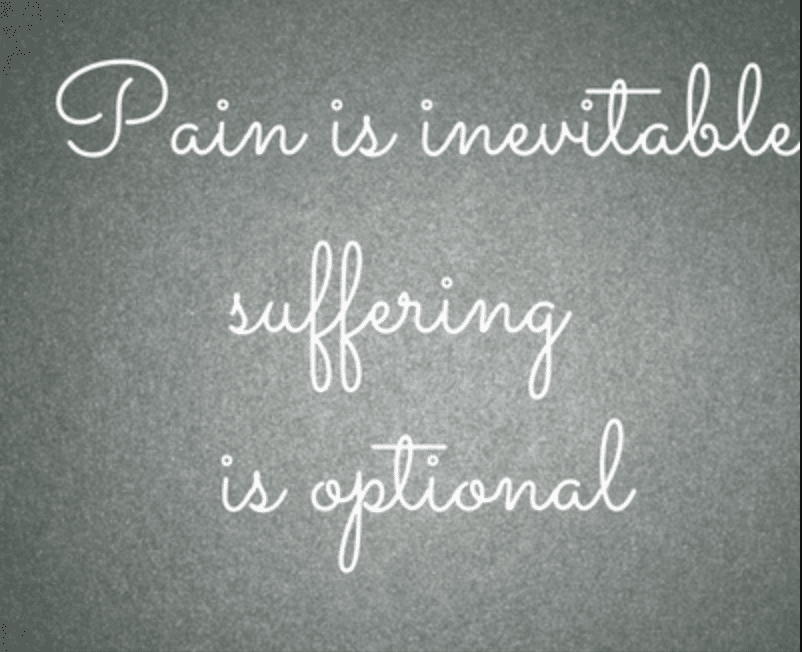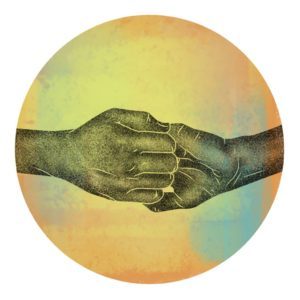Theme of practice or intention: What is suffering, pain, misery?
Let’s look at pain and suffering in our yoga practice and connect with it. Sound like fun?
In yoga and Buddhism suffering is referred to as “duhkha/dukkha”.
Iyengar in “Light on Yoga” defines it as: Pain, sorrow, grief.
Desikachar in “Heart of Yoga” defines it as: Feeling of discomfort, pain.
Stepping into this intention for practice offers a lot of meat on the bones and years of exploration, discovery, shedding and revelation about ourselves.
Misery and pain are greatly influenced by perception

And our suffering is based on our perception between what we want and what is possible.
Desire and unsatisfied desire results in the perception of loss and insufficiency. When we are confronted with an inability and lack of power to influence a situation or emotion we interpret the resultant feeling as suffering
In a yoga pose (asana) or a yoga practice (Ashtanga, Iyengar, Yin) we can interpret suffering on a physical level. We confront perceived deficiencies or inability to access certain poses or levels of poses as failures and pain and misery. Intensity levels in stretches can present discomfort in the body.
But all discomfort is not suffering. In fact much of the depth of the physical practice offers opportunities to create a relationship with this comfort that removes reaction and attachment.
Our aversion to discomfort often leads us to believe that all discomfort is suffering and to be avoided. Our relationship to sensation often rewards what we perceive is pleasurable and create a version in what we perceive as painful or unpleasant. The process of yoga opens our receptivity to experiencing and changing the relationship or at least observing the relationship we have with gradations of sensation comfortable or uncomfortable. And within that observation we note our reactions and our attachments.
Let’s remember the components of the basic practice plan we have established:
Plan, Time, Observe, Guidance.
The plan: Practice and study suffering. This will involve Asana, Svadyaya (study), Dharana (focus).
Poses for this week. Twisting triangle. Camel. Split. Mountain.
Twisting Triangle. This posture is built on sitting in stable torsion. Talk about struggle. You can do this with a block and make less struggle for yourself, or twist yourself into knots. LOL. Tip: Create a solid and stable base and find the amount of twisting your body will allow. Can you listen? Can you negotiate with your body or is your mind making demands?
Camel: This is a backbend that I encourage we do with the support of a wall and observe limitations and movement and how the mind reacts, then the body.
Split: This likely requires lots of modifications and that unto itself can create an aversion to doing the “full” pose or we limit ourselves before trying, rejecting the notion the body will ever get “there.”
Mountain: Standing can feel simple. It can feel boring. It can feel like torture when we want to sit down. What can we learn about our perception of suffering in this pose.
Time: Extend your time in breaths and time in poses. Maybe just 2 breaths more than you normally would
Observe: Witness and journal. When I felt a certain sensation what was my emotional reaction? What was my physical reaction? How did my breath react? When I noticed another sensation what did I enjoy? What was I looking forward to? In terms of joy and pleasure and familiarity? In other words what am I attached to? Over time we start to notice patterns about our own reactivity. We noticed the types of things we react to. Sharpness. Fear. Insecurity. Limitation. And we start to notice the things that we are attached to. Gratification. Pleasure. Pride. Accomplishment. Which is nothing more than pride 🙂
Mudra: Ganesha

Mudras are powerful ways to remain connected to intention and embody that intention. This mudra involves feeling the the strain of struggle within our bodies with the resistant pulling. Envisioning our obstacles or struggles in life as we activate this resistance we then invite the sensation and visualization of the release or navigation around the obstacle.
Back to suffering and why it’s important to create a relationship with it.
Everything passes. All is impermanent.
I am not ever experiencing a bad mood. I may be irritated. I may be angry. I may be disappointed. But those are all states of reaction to an unsatisfied outcome or event. I noticed I was being sharp with my dog on a walk. I was able to pause and notice I was irritated. I was not having a bad day. I was irritatedl
I tried to shake it off. But every time she needed to stop and smell things when I wanted to keep walking I got irritated. It doesn’t happen every day. But it was clear. Today was the day. Finally I stopped and looked up at the sky and looked up at the trees. And I asked myself what was going on. Had she been doing anything wrong? No. Has she done anything that dogs are not allowed to do? No. What was going on?
I was irritated. Why? I pause and look at the sky and the trees. And ask myself where am I? Where have I been most recently? My mind had actually been on a work project. And I was trying to make an itemized list in my mind as we were walking. And her sudden stops were interrupting my thought process. I was irritated because I was not able to do what I wanted to. I was not able to put my focus where I wanted it to be. My desire was not getting satisfied. Likely because I Was trying to do two things at one time. Our focus can only ever truly be on one thing. So if I had put the dog on auto pilot so that my focus could be on the itemized list when the auto pilot interrupted the focus I got irritated. When I noticed what was the source of my irritation it started to dissipate.
When we shed light on the truth of the matter, truth gets to be truth. Truth provides ease. And then I got to be irritated at myself for my irritation. LOL. And this too shall pass.
And I applied a heaping spoonful of forgiveness. And we resumed the remainder of our walk without irritation. It was full of present awareness and acceptance. Life on life’s terms.
Countless times on the mat I’ve been irritated at not being able to achieve what my will wanted. That ability to notice irritation or discomfort in my physical body and my mind, helped me stop and ask myself on the dog walk what was really going on.
And countless dog walks like this one help me when I am on the mat noticing when I am applying resistance to resistance and wondering why I am getting nowhere. And wonder why I do not have a peaceful mind and a peaceful heart.